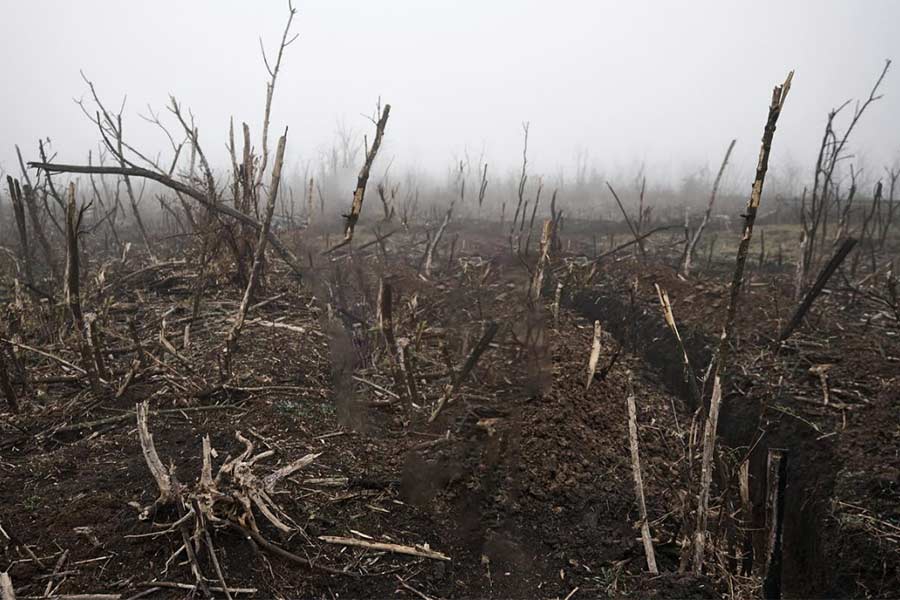During three years of russia`s full-scale invasion greenhouse gas emissions caused by military actions, destruction of infrastructure, fires, and other war-related factors reached nearly 237 million tons of CO₂ equivalent, research says. This emission volume is comparable to the annual emissions of Austria, Hungary, the Czech Republic, and Slovakia combined.
“The aggression of the Russian Federation not only causes devastating harm to Ukraine’s environment but also has a global impact on the climate. Large-scale forest fires along the front line have become one of the main sources of increased emissions”, – said the lead author of the report, Lennard de Klerk.
The main sources of emissions are warfare (34%), reconstruction of destroyed infrastructure (27%), and landscape fires (21%). The year 2024 saw record levels of forest fires along the front line, tripling emissions from fires compared to 2023. The report emphasizes that Russia’s aggression is the cause of these additional greenhouse gas emissions exacerbating the climate crisis, and Russia should bear responsibility for the climate damage, which is valued at over $43 billion based on a social cost of carbon of $185 per ton CO₂ equivalent.
“Russian aggression is the cause of additional greenhouse gas emissions, which worsen the existing climate crisis. And it is Russia that should bear responsibility for the climate damage from the war, which is now estimated at more than $43 billion. The report is one of the important steps that can help hold Russia accountable”, – emphasized Vasylyna Belo, Head of the Climate Department at the NGO Ecoaction.
This is the fifth report from the Initiative Initiative on GHG Accounting of War, conducted with support from the NGO “Ecoaction” and partnerships including the Ukrainian Ministry of Economy, Environment, and Agriculture. It is based on the first comprehensive methodology for assessing emissions related to conflicts, presented at the COP29 UN climate conference in Baku.
The Initiative started in 2022 and is the world’s first systematic attempt to assess climate impacts during an active armed conflict. The report is supported by the European Climate Foundation (ECF) and the Swedish Society for Nature Conservation (SSNC).

